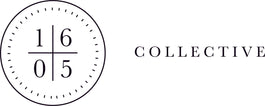The use of geometric shapes and forms in minimal art
Beginning in the early 20th century, the modern abstract movement concentrated on geometric-based art, particularly in painting, drawing, and sculpture. This movement gave artists the opportunity to establish specific traditions and styles. Some 20th-century painters who make use of geometric shapes are included in the following list, which is not exhaustive. There were a number of artists there, including Wassily Kandinsky, Pablo Picasso, Piet Mondrian, Bridget Riley, Georges Vantongerloo, Robert Morris, Mary Corse, and William Roberts.
A variety of art styles use geometric shapes for different purposes. The most known styles of the abstract movement are Cubism (1907-1914) initiated in France and Spain. Vorticism (1912-1915) started in England, Russian Suprematism (1915-1923), Bauhaus (1919-1933), 50s Swiss Design and, of course, 60s and 70s Minimalism and Fractal Art (1980s until today), both coined in the United States.

What is a geometric shape in art and how is it important to the development of drawings, sculptures, and paintings? These are questions you can have when studying about art and witnessing it at museums. The use of mathematical shapes like triangles, squares, circles, and lines to organise space is what is known as the geometric shape definition in art. Geometry can be used by artists to create a theme; for instance, Cubism uses cubes and Fractal Art uses statistical constants. Geometric shapes in art also give artists the chance to focus on and express emotion. As an illustration, Wassily Kandinsky, one of the pioneers of geometric abstract painting in the 20th century, painted geometric shapes to convey feelings later in his life.
By isolating the geometric or organic shape first and then elaborating on it, artists may draw anything using both organic and geometric shapes. A square, a circle, and a few ovals, for instance, could be used by an artist to begin drawing a bear. Organic shapes are drawn from and found in nature, as opposed to geometric shapes, which are found in human-made objects. Natural forms like a river or a clover have many curves and flows. Because their shapes are not precise or predictable, they differ from geometric shapes. The fundamental design components of geometric and organic shapes are expressed in various ways. While the geometric shape is predictable and frequently more angular, the organic shape is surprising and curved in natural ways.

Both the space that is filled and the space that is left empty have significance and are purposely generated in design. The shape of the object, like a square, is a positive shape. The space between objects, such as the column between two squares, is a negative shape. Artists can couple circles and squares along horizontal and vertical axes to make hourglass figures as an example, which will activate the space between them and highlight the negative shape. In geometric art, the ratio of occupied to unoccupied space can be equally significant.

